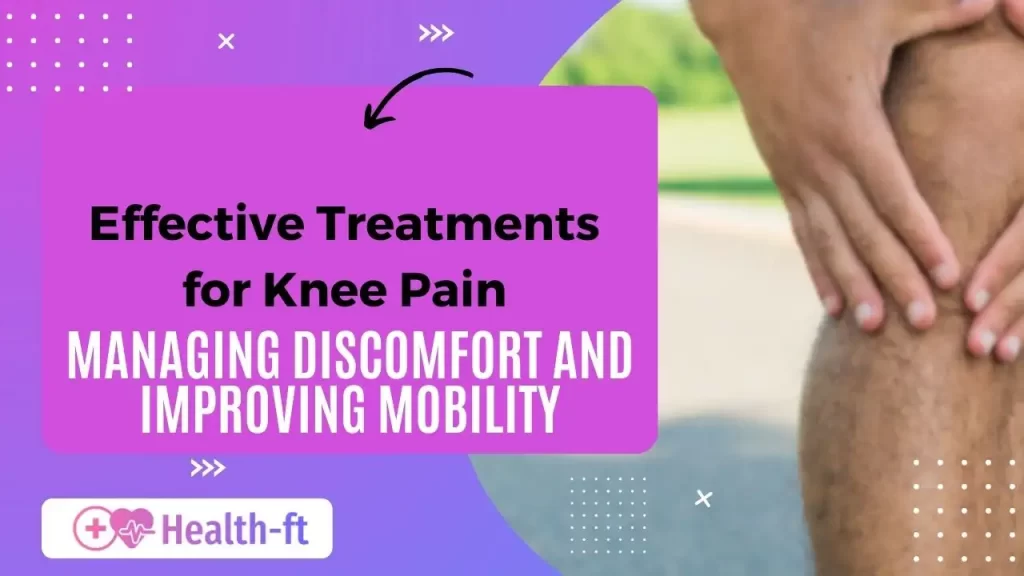Knee pain is a common issue affecting people of all ages due to injury, overuse, or medical conditions like arthritis. As one of the body’s most weight-bearing joints, the knee is complex and crucial for mobility. Because of this, addressing knee pain effectively requires careful consideration of the cause and appropriate treatment.
This article explores common causes, treatments—including home remedies, medications, and surgical options—and essential strategies to manage and prevent knee pain.
What Are the Common Causes of Knee Pain?
Understanding the causes of inner knee pain is the first step in finding the proper treatment. Some of the most common causes include:
- Osteoarthritis: Wear-and-tear arthritis that results from cartilage deterioration over time.
- Rheumatoid Arthritis: An autoimmune disease that leads to inflammation and joint damage.
- Injuries: Ligament strains, meniscus tears, fractures, and dislocations.
- Tendonitis: Inflammation of the tendons due to repetitive movement or overuse.
- Bursitis: Inflammation of the bursae, which cushion the knee joint.
- Gout: A buildup of uric acid crystals in the knee joint, causing intense pain.
- Patellar Tracking Disorder: Misalignment of the kneecap that causes pain and instability.
- Muscle Imbalances and Overuse: Weak or tight muscles that strain the knee joint excessively.
How Can You Treat Knee Pain at Home?
Mild to moderate knee pain can often be managed with knee pain treatment without surgery, using simple home remedies.
-
RICE Method:
- Rest: Avoid activities that aggravate the pain.
- Ice: Apply a cold pack for 15–20 minutes every few hours to reduce inflammation.
- Compression: Use a knee brace or elastic bandage to control swelling.
- Elevation: Keep the knee raised above heart level to reduce fluid buildup.
-
Heat Therapy: A heating pad or warm compress can help relax muscles and improve circulation, especially for arthritis-related pain.
-
Stretching and Strengthening Exercises: Gentle stretching and strengthening exercises, such as quadriceps and hamstring exercises, can help stabilize the knee and act as knee pain relief exercises.
-
Maintaining a Healthy Weight: Excess weight puts additional pressure on the knees, increasing the risk of pain and joint damage.
What Medical Treatments Are Available for Knee Pain?
When home remedies are not enough, medical treatments may be necessary:
- Physical Therapy: Strengthening exercises improve knee stability and flexibility.
- Corticosteroid Injections: These injections help reduce inflammation and provide temporary pain relief.
- Hyaluronic Acid Injections: Used for osteoarthritis, these injections improve joint lubrication.
- Platelet-Rich Plasma (PRP) Therapy: Uses components of the patient’s blood to reduce inflammation and promote healing.
- Knee Braces and Orthotics: Provide additional support and reduce strain on the knee joint.
- Over-the-Counter Pain Relievers: Nonsteroidal anti-inflammatory drugs (NSAIDs) such as ibuprofen and naproxen help manage pain and inflammation.
When Is Surgery Needed for Knee Pain?
For severe or persistent knee pain that does not improve with other treatments, surgery may be required:
- Arthroscopy: A minimally invasive procedure to remove damaged cartilage or clean out the joint.
- Partial Knee Replacement: Replaces only the damaged portion of the knee joint.
- Total Knee Replacement: The entire knee joint is replaced with an artificial implant.
- Ligament Reconstruction: Surgery to repair torn ligaments, such as ACL reconstruction, to restore knee stability.
How Can You Manage Knee Pain Caused by Arthritis?
Arthritis is one of the leading causes of chronic knee pain. While there is no cure, these strategies can help:
- Exercise and Physical Therapy: Low-impact exercises strengthen the knee without worsening symptoms.
- Dietary Supplements: Glucosamine, chondroitin, and omega-3 fatty acids may support joint health.
- Assistive Devices: Canes, walkers, or knee braces help relieve strain on the affected joint.
- Anti-Inflammatory Diet: Eating whole foods rich in antioxidants—such as leafy greens, nuts, and fatty fish—can help reduce inflammation.
How Can You Prevent Knee Pain?
Taking proactive steps can reduce the risk of knee pain and slow the progression of chronic conditions:
- Warm Up Before Exercise: Prepares muscles and joints, reducing strain.
- Wear Proper Footwear: Supportive shoes improve balance and alignment.
- Gradually Increase Exercise Intensity: Sudden changes in activity levels can lead to injuries.
- Strengthen Knee-Supporting Muscles: Strengthening the quads, hamstrings, and calves improves joint stability.
- Maintain Good Posture: Proper movement mechanics prevent unnecessary stress on the knees.
What Are Some Additional Resources for Managing Knee Pain?
For more insights on pain relief and overall wellness, explore the following resources:
- Breathing Techniques for Relaxation: Stress can worsen pain perception. Learn effective breathing exercises for anxiety and lung health to promote relaxation.
- Understanding Anxiety’s Role in Chronic Pain: Stress and anxiety can amplify knee pain. Discover the common symptoms of anxiety and their solutions to improve overall well-being.
- Improving Sleep for Better Pain Management: Restful sleep is essential for healing and pain relief. If knee pain disrupts your sleep, consider these natural remedies for sleep apnea to enhance recovery.
Conclusion
Knee pain is a widespread issue, but with the right approach, it can be effectively managed. Whether the pain is due to an injury, arthritis, or overuse, a combination of home remedies, medical treatments, and lifestyle adjustments can help alleviate discomfort.
Preventative care, such as regular exercise, weight management, and proper joint support, plays a crucial role in maintaining knee health. If knee pain persists, consulting a doctor for a personalized treatment plan ensures the best course of action for long-term relief.




